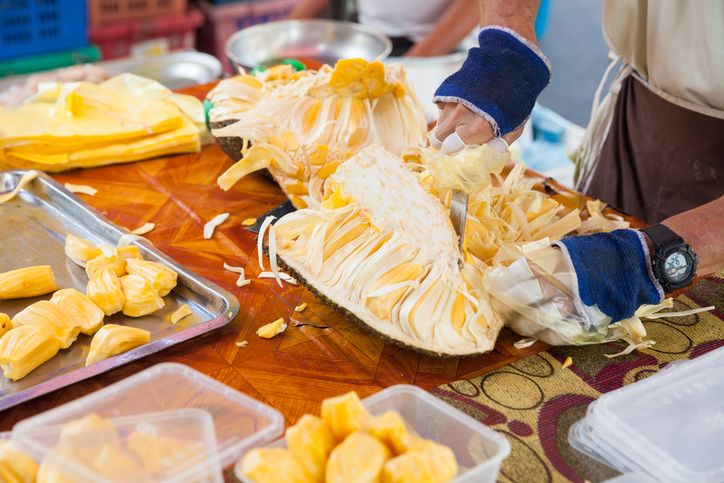
By Larry Mogelonsky, MBA, P. Eng. (www.lma.ca)
With 2016 dubbed ‘The Year of the Pulse’ by the United Nations with beans cited for their versatility as both an energy and protein source in addition to their potent health benefits, it is time once more to declare 2017 as a banner year for something else. While many chefs are still searching for new and clever ways to infuse legumes into their menus, it is nevertheless every hotelier’s duty as a benefactor for food innovation to be on the lookout for the best big thing. This year, I’m not waiting for the UN to make its proclamation; I am telling you today to start looking at starchy fruit.
The common perception of ‘starchy fruits’ likely pertains to bananas and not much else. But with a bit of research, it should be readily apparent that there are several other contenders worth another glance. These include plantains, breadfruit, jackfruit, plums or even the many different types of squashes, pumpkins or gourds which technically fall into this category even though they are traditionally prepared in a manner similar to root vegetables. While you are likely familiar with the look and taste of a squash, plantain or plum, the other two deserve some explanation.
Jackfruit and breadfruit are both tropical plants of the same family, native to Southeast Asia and the South Pacific respectively. The latter usually comes out to be a bit smaller than your average honeydew while the former is a sight to behold – a single fruit can reach upwards of 50 kilograms by weight! Like its namesake, breadfruit has a very neutral, bread-like flavor, even when cooked to render softer, simpler sugars from its natural state. The jackfruit also has a mild palate; when eaten raw it has a chewy, dry flesh with hints of banana, melon and bubblegum. In both cases, their blandness means that the fruits can absorb practically any spice or sauce you throw their way – a perfect base for a visionary chef.
In the sugar-phobic society we currently find ourselves in, perhaps you find it a bit odd that I am now soliciting a bunch of carby, esoteric crops. However, just as the push for pulses was designed to help transition our eating habits away from high glycemic, low nutrient foods like bread, pasta, potatoes and rice, starchy fruits present another alternative to this broad initiative. Moreover, their applications are increasing every day, with many restaurants now offering jackfruit burger patties, spaghetti squash rather than a grain-based noodle or adopting more of a Latin American vibe by serving plantain chips instead of the more perfunctory French fries. They work well as a versatile substitute for foods with mellower tastes and a hardy texture.
True, many of these abovementioned fruits only grow in tropical regions and thus aren’t as readily accessible to hotels in the Northern Hemisphere nor are they necessarily cheaper than their regular carbohydrate counterparts. Given these inventory problems, you have to ask, is it worth it?
This depends on many factors, but getting back to what was addressed in the first paragraph, it is our responsibility to make the future of food a reality, lest our properties’ restaurants become no different than the fast casual eatery down the block.
In order to make our hotels stand out and thereby help drive bookings in an increasingly crowded hotel and advertising landscape, every aspect of your operations must be different in some way, shape or form. To this effect, becoming an F&B innovator is relatively cheaper than most other endeavors as it doesn’t have to necessarily involve any renovations, or upgrades to hard or soft goods.
Essentially what we are discussing here is but one potential way to create a memorable touchpoint with restaurant patrons in order to heighten the dining experience, broader appeal within the community and ultimately guest satisfaction for those staying at your hotel. Instead of serving pumpkin soup in a white china bowl, use a hollowed-out squash as the pot. Breadfruit pizza is even a thing down in Jamaica. When in doubt for inspiration, look south to the Caribbean, South America or Asia.
Even though it’s nice to chase a new object of affection with each passing year, by all means keep exploring how to integrate beans as that trend is far from over. Due to several factors including the continued advance of vegetarianism, the rising prices of meat and the now widely recognized hazards that livestock pose to our environment, my bet is that legumes are here to stay and will only become increasingly popular.
While it is a noble endeavor to put more beans on the menu, as they become more commonplace, they will less and less of an emotional impact on diners. As such, you will inevitably need to find new foods or recipes to surprise and delight your patrons. So, if the opportunity presents itself, a starchy fruit infusion may be just the thing to bring new life to your restaurant this coming year and beyond.
This article may not be reproduced without the expressed permission of the author.
Editor’s note: To discuss business challenges or to discuss speaking engagements please contact Larry directly.


